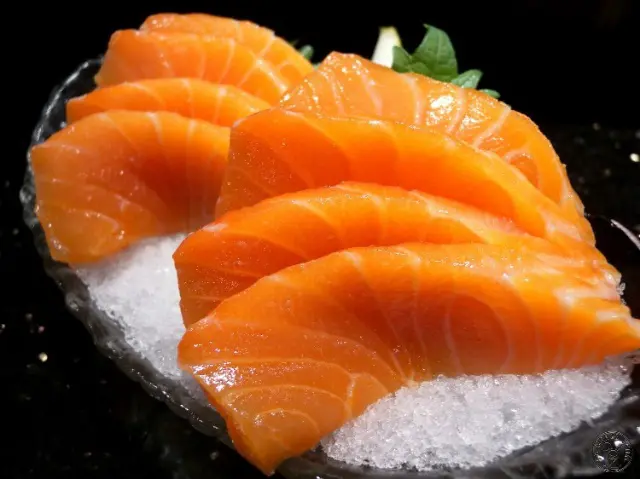The fishing season for autumn salmon is coming to an end, and this year’s take is so poor it is likely to be the lowest in 30 years.
The low catch has been pushing up wholesale prices for the fish, which is often given as a year-end gift and is an ingredient in traditional osechi dishes on New Year’s Day.
In mid-November, aramakizake lightly salted salmon — a popular gift item around the New Year holiday — was sold at around ¥10,000 per fish at Showa Foods Ltd., a shop specializing in the fish at the Tsukiji Outer Market in Chuo Ward, Tokyo. The wholesale price of autumn salmon at the adjacent Tsukiji wholesale food market is now 1.5 times that of a year earlier, and on some days the price almost doubles.
“The period for year-end gifts is a big season for us,” said Showa Foods President Yumiko Sato, 56. “Although the wholesale price [for salmon] is high, we’d like to avoid hikes as much as possible and sell a large number at a small profit.”
Aramakizake lightly salted salmon are sold at a shop in the Tsukiji Outer Market in Tokyo earlier this month. Photo:The Yomiuri Shimbun
According to a survey by the Hokkaido National Fisheries Research Institute, a unit of the Japan Fisheries and Education Agency, the catch of autumn salmon totaled 23.21 million nationwide by the end of October, or 30 percent lower than a year earlier.
A poor catch has been reported not only in waters off Hokkaido, the main fishing ground for salmon, but also off Honshu’s Sanriku and Sea of Japan coastlines. The fishing season will continue until the end of the year as the salmon move southward, but the catch is unlikely to see any considerable increase. The volume is expected to eventually stand at just around one-third this fiscal year of the peak year of fiscal 1996 at 88.79 million salmon.
Salmon roe is also in short supply. In October, the roe shipments received by Tsukiji market decreased by 15 percent year-on-year, while its average wholesale price stood at ¥5,392 per kilogram, or 18 percent higher than a year earlier.
(The Japan News)
 简体中文
简体中文

